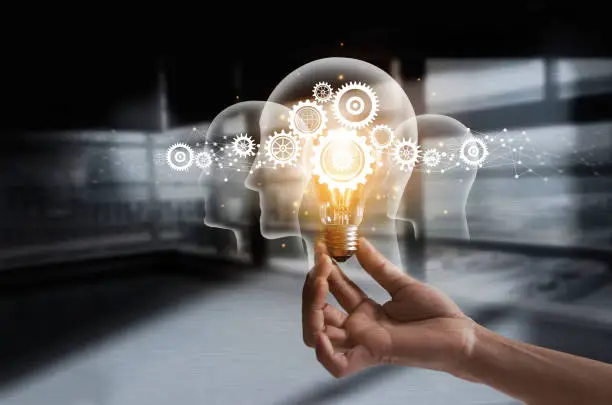
AI Language and the Future of Communication
- 0
Table of Contents
ToggleIntroduction
The combination of AI and language offers exciting potential in helping us better understand one another and connect, communicate, and collaborate more effectively! (in an age of “Digital”). Compelling stuff, indeed, but Artificial Intelligence has already moved beyond something distant and abstract into literally taking action on your daily interactions.
AI is changing the nature of language translation from real time to chatbots. In this article, we will discuss how AI is changing how we speak, write and understand languages; the future could be one where communication faces no barriers.
The Role of AI In Today Communication

Natural Language Processing (NLP) and Machine Learning technologies have made digital communication ever since, and AI is part of our communication in one way or another now. Natural Language Processing (NLP) is used to understand the voice commands in Virtual Assistants like Siri, Alexa, and Google Assistant and provide accurate responses almost instantaneously.
Likewise, AI-based customer support bots are solving billions of queries every day, improving wait times and lowering human effort. They make up for the time to communicate, increase accessibility, and cut the cost, which summarizes the inseparability of AI and language and how communication will be in the future.
What is Natural Language Processing (NLP)?
Natural Language Processing is an AI discipline that allows computers to read, understand, and respond to human languages. NLP, enables AI systems to analyze text or speech patterns in order to comprehend context and sentiment. Examples of NLP applications are grammar correction tools, language translation apps, and voice recognition software.
Natural Language Processing serves the function to platforms such as Grammarly and Google Translate tools, enabling communication from one language to another. It provides the backbone for innovative experiences that define AI, language, and the future of communication at the personal and professional level.
Meanwhile, Real-Time Language Translation
However, one of the most remarkable milestones in AI and language is real-time translation. AI tools such as DeepL and Google Translate use neural networks to analyze and translate languages with greater precision. They can also instantly translate spoken or written language, making it easier to interact across cultures.
These tools help travelers, businesses and diplomats overcome language barriers. These services are a prime example of how artificial intelligence, language, and the future of communication are becoming more inclusive and efficient as they exact more accuracy and speed.
Language Learning AI in Education
Introduction — The Science Of AI In Language Learning: Though AI has been around for decades, its impact on education, especially language learning, as compared to earlier years is rather greater. AI algorithms are used in apps like Duolingo and Babbel which customize the lessons, detect pronunciations, and tailor content according to individual pace.
With instant feedback, learning is quicker and more interactive because AI tutors know what mistakes a student made in their work and can respond in real time. AI-enabled tools help the classroom teachers in some grading, providing useful language comprehension information. This innovation backs the statement that AI, language and the future of communication will change the way we learn and teach language.
Using AI to Improve Accessibility
AI helps in making communication easier for people with disabilities, which is one of the most important contributions of AI to communication. People with hearing impairment are benefited from speech-to-text applications while individuals facing vision challenges are aided by text-to-speech.
Voice-based description applications such as Microsoft’s Seeing AI help blind users get a sense of their surroundings. These are the success stories that show us what happens when AI, language, and the future of communication come together with communication for all. With AI becoming more sophisticated, more of us will gain access to being able to interact with the world in ways that matter.
Artificial Intelligence in Social Media and Content Creation
Social media companies are using more and more AI in content moderation, post generation, and comment translation. AI applications are used to recommend relevant content based on user behavior and maintain adherence to community guidelines. In addition, there are content creation tools such as ChatGPT and Jasper AI that makes writing articles, captions, and scripts faster and easier.
Such tools utilize large language models to imitate a human level of creativity. AI, language and the future of communication: Transforming digital storytelling and global communications this decade
Language Bias in AI and Ethical Concerns

While beneficial, AI in language processing also comes with its shortcomings. The one basic concern is about bias in AI algorithms, often due to biased training data. Inapplicable — AI systems often have difficulty understanding dialects or minority languages which may lead to incorrect translations or inappropriate outputs.
There’s a threat that also looms from AI, misinformation and fake content generated by AI. While the power of AI and language continue to expand the horizons of how we communicate, ethical practices must prevail to ensure AI serves equity, accuracy, and accountability in all facets of conversation.
AI: The Corporate Communication Landscape
More companies are implementing communication tools powered by artificial intelligence to optimize communication among employees and with clients. AI chatbots are also used to cover 24/7 customer support, while AI emails and reports help people get things done faster. AI can be used by platforms to summarize conversations, point out highlights, schedule follow-ups in case of Slack and MS Teams.
These are to enhance the precision, proper response time and effective overall communication. Extensive use of AI and language is going to play a significant part in the near future regarding how corporations communicate, and this is key to staying ahead of the curve of competition as companies, small and large, seek to remain innovative in this globalised economy.
Foretastes and Imagined Futures

The progressive ease of communication via AI will scale as AI matures. Evolution towards AI systems that understand emotions, detect sarcasm, or tell stories for the context. Quantum computers may process AI faster than humans and drive towards hundreds of fluent near-human humans in most languages.
AR–AI merges to provide language overlays in smart glasses April 5 2023– These innovations reaffirm that AI, language, and the evolution of communication will take us to a hyper-connected, multilingual, and compassionate world.
Conclusion
The combination of AI, language, and the future of communication is not simply a technological trend; it is a fundamental change in how mankind communicate. AI is reducing the communication barrier in various ways (real-time translations, inclusive tools, creative content generation, etc.) with the advent of faster, smarter, accessible communication.
However it also requires a lot of ethical and cross-culture due diligence. However, as we step into this future, our biggest quandary would be striking a balance between the power of AI and our human connection in conversations. The road forward will be just as rewarding as it is life-changing.